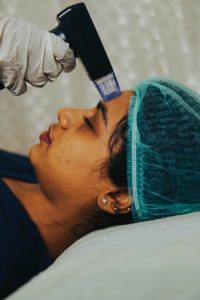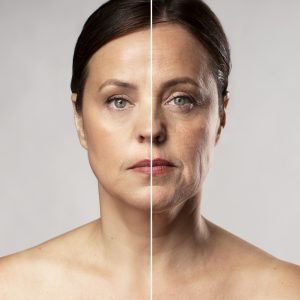Hair loss, though a very common occurrence, has the potential to grow into an emotionally devastating experience for both men and women as it progresses, leading to balding, often resulting in a negative body image, low self-esteem and even depression. It is important for us to acknowledge that this anxiety caused by hair loss is legitimate and needs to be addressed.
History: Hair Transplant is the transplantation of hair follicles from a donor site to a bald area. In Japan around 1939, Dr. Shoji Okuda did hair transplant for treating traumatic alopecia. Hair Transplant has come a long way. Dr. Orentreich in 1956 laid the foundation for modern hair transplant methods like FUT and FUE. He showed the Donor Dominance property of hairs, Hair follicles transplanted from the back of the scalp could resist any effect by DHT (DihydroTestosterone). They grow like natural hairs and maintain bald resistance property.
Earlier hair transplanted in the form of hair-bearing flaps. Advanced methods like mini and micro-grafting introduced as technology advanced. Mini-grafts of hairs used to give high-density looks. Micro-grafts of hair used to define frontal hairline to provide a natural look. Mini-graft contains 5-6 hairs while micrografts are small consisting of 2-3 hair.
In 90’s Follicular Transplantation Method evolved. The dissection of follicular hair under the videomicroscope was shown at that time. Follicular grafts were then transplanted to a bald area.
Here, we present a detailed guide to the subject that answers a lot of questions around it.
What causes hair loss?
Although the causes of hair loss could be many, varying from hormonal disorders, stress, nutritional deficiencies, bacterial infections and even cancer, the most common type of hair loss condition in men is Androgenetic Alopecia (AGA), also known as Male Pattern Baldness (MBP). ‘Andro’ refers to the male sex hormones called androgens, which besides other functions also regulate hair growth, and ‘genetic’ refers to the inherited gene necessary for the Male Pattern Baldness to occur. Hair loss in men starts with a receding hairline, eventually leaving only thin & short hair around the sides of the head. An interesting fact is that the hormones do not have to be abnormally high for this to occur. If the gene for hair loss is present, and the androgens are at the normal level, then male pattern baldness is bound to occur. The gene can be inherited from either parents’ side. In women too, the most common type of hair loss is Female Androgenetic Alopecia which is again, hereditary.
Baldness
Hair loss leads to baldness also termed as alopecia. Hair Loss is different in male and female.
Types of Baldness
Male Pattern Baldness
Male Pattern Baldness is also androgenic alopecia. MPB relates to hormones and genetics. Hairs grow in the small cavity-like structure called follicles.
Baldness occurs when follicle stops growing hair. It happens due to DHT deposition at the root of follicles. But the follicle remains alive. The Hairs can still grow there. Hair loss starts occurring at the frontal hairline and moves backward. Among many options available in the market “Hair Transplant” is only one option to treat “Male Pattern Baldness.”
Female Pattern Baldness
Female pattern baldness is like Male pattern baldness. Except it’s not due to hormones but due to aging. There are few clues for Female Pattern Baldness. In a female pattern, baldness hair loss starts by thinning of hair at the crown. Frontal hairline of females is unaffected. Female hair loss usually doesn’t progress to total baldness. Hair transplant is very helpful in treating female pattern baldness.
Hair Transplant can be handy in treating baldness. The concept of the hair follicles and grafting them has revolutionized the treatment procedure.
Is there a solution?
Treatments for hair loss using medicines have limited success. They work in preventing further hair loss but very rarely in re-growing lost hair. But the good news is, there is a permanent solution – and that is Hair Transplant!
What is Hair Transplant?
Hair Transplant is a surgical procedure that restores naturally growing hair to areas that have been thinning or bald. It works primarily on the now well-established principle that transplanted hair follicles (roots moved from their original location to another area) will behave as they did in their original site. A very simple explanation of the procedure is that it involves taking hair from the donor area (an area where there is ample amount of hair) and transplanting it in the recipient area (the balding area). This transplanted hair is permanent and will grow naturally for the rest of your life, which means you will need haircuts. You will also be able to shampoo it, style it, and dye it, just like you had been doing it before the hair loss set in.
What is Donor Area?
Donor area in a hair transplant is the area from where the hair is extracted and transferred to the balding region. The donor area is usually the back and sides of the scalp as the hair growth in these areas is abundant and not affected by the hormone Dihydrotestosterone (DHT). Hair extracted from these regions is most unresponsive to androgens and is therefore permanent. Even if someone is totally bald, he will still have some hair at the back of his head. This hair is permanent and never falls. A permanent zone has 6000-7000 grafts on an average. (Hair grafts are basically the roots of hair that are used for transplanting hair follicles. One hair graft usually contains 1-4 hair strands.) In Indians, each graft has approximately 1.7 hair strands (average). Hair Transplant works on the concept that hair extracted from these regions, where it is most unresponsive to androgens when transplanted, will behave the same and will grow like natural hair. You will get a fresh crop of hair in the frontal areas (or wherever you have transplanted), which is permanent and will never fall.
Is the procedure comfortable?
The procedure is carried out under local anesthesia on an outpatient basis. The patient is awake throughout and can watch TV, listen to music and even have a snack during the break. A single session takes approximately 2-6 hours depending on the number of follicles to be extracted and the area to be covered. The patient can go home immediately after the procedure.
Hair Transplant Techniques
All hair transplant techniques work on the simple concept of skilfully distributing hair from areas of abundance to areas where the hair loss is visible. The most successful and commonly used techniques are:
- Follicular Unit Transplant (FUT) or the Strip Method
- Follicular Unit Extraction Method (FUE)
- Advanced FUE Method (DHT)
What is Follicular Unit Transplant or FUT?
Follicular Unit Transplantation is a procedure where hair is transplanted from areas at the back and sides of the scalp and moved to balding areas of the scalp. The patient is anesthetized and the doctor removes strips of tissue from the donor area. Once extracted, the donor strip is delicately dissected (slivered) into individual follicular units under a microscope.
The doctor then makes tiny holes in the scalp, where the follicular unit grafts are carefully placed. The donor area is then sutured by a special plastic surgery technique called Trichophytic Closure. A very thin strip of the outermost layer of the skin, known as the epidermis, is removed from one side of the wound before it is closed. As the incision heals, the follicles lying under the scar grow through it and this helps camouflage the scar.
What is Follicular Unit Extraction or FUE?
This technique involves extracting individual hair follicles directly from the patient’s donor area. As a preparation for the procedure, the hair of the donor area is completely trimmed. The skin surface around each follicular unit is superficially incised by a motorized punch and the follicular unit is then extracted directly from the scalp using a combination of forceps traction and pressure on the surrounding area.
The basic difference between the two procedures is that while FUT involves removing a strip of hair and then dividing it into individual units, the FUE involves removing each follicular unit individually. FUE also takes significantly lesser time to heal than FUT, results in small puncture scars that are almost invisible to the naked eye and a recovery time of less than 7 days.
Another difference between the two is that the FUT method can get more grafts than the FUE technique. While the FUE method allows for 2000-2700 graft extraction, the FUT method has scope for 2600-3000 and sometimes even more depending upon the native density. A combination of the two methods can capture 3500-4500 grafts in one or two sessions. The number of grafts required by an individual will therefore also be one of the deciding factors in the course of treatment that the doctor will advise.
What is DHT method of hair transplant?
Direct Hair Transfer (DHT) also called DHI (Direct Hair Implantation) is an advanced form of the FUE technique. Contrary to the conventional FUE procedure, the follicular units in DHT are extracted individually from the donor area without the use of a motor and with the help of a manual extractor and implanted with a patented device that is called a transplanter without creation of reception holes. The donor area can be the scalp or other areas of body like the beard, chest or pubic region. The difference mainly lies in the placement of the follicles where we keep the angle, depth and direction of grafts in mind that finally gives 100% natural results. Also, out of body time for each graft decreases substantially. The advantages of manual punch (decreased damage due to absence of vibration and heat due to motorized punches) and decreased out of body time, helps in greater density and more successful results as compared to FUE. This results in a hairline that appears completely natural.
What happens after the Transplant?
In the months following the procedure, all the transplanted hair falls off. The hair begins to re-grow after a period of one or two months, at an average rate of 1cm a month. You would, therefore, be able to truly appreciate the results of the procedure after about 8-10 months. This hair would be permanent and you can shampoo, cut, style, dye or even color it!
Which is the right solution for me?
It becomes extremely difficult for a patient to pick the right solution, considering the amount of literature on hair transplant that is so readily available on the Internet that leaves you more baffled than informed. There is never a same solution for everyone and hence, it is best to entrust this decision in the hands of a specialist.
Often, surgeons or clinics promote one method over the other because they either have the expertise or the equipment to perform only one kind of procedure. This is similar to visiting a car dealer, who, without understanding your requirements, recommends that an “A” car is better than a “B” car, simply because he deals only in “A” cars!
With a trained team of Plastic Surgeons and technicians, we have the distinguished ability to perform all techniques of hair transplant. A careful analysis of the individual’s unique hair loss condition enables the surgeon to offer a customized solution. Since we specialize in all the advanced techniques, clients can be rest assured that the solution being offered is not a biased one, based on the singular technique that is available but is based on the analysis of an expert. In certain cases, a single technique might be enough while in others, a combination of two techniques may be suggested.
Female Hair Transplant Solution
For FUE/DHT, donor area is needs trimming. However, female patients don’t want to shave their scalp at all. Hence for the FUT/Strip method is recommended that can be performed without trimming. Once we harvest the strip, each Follicular unit is dissected and them implanted using techniques of DHT, so that even the frontal area does not need trimming.
Hair Restoration at other parts of body
We can also perform Hair transplant at other regions of the body such as Beard, Moustaches and Eyebrows
Eyebrow Hair Transplant
Eyebrow Hair Transplant gives dense, thick, well-defined eyebrows. In some cases of partial/complete loss of eyebrows or persons having thin eyebrows, hair transplant remains the only solution.
Beard / Moustaches Hair Transplant
Lost beard/ moustaches, e.g., after scars or burns, are restored with the hair transplant most effectively and permanently.
Synopsis
The Hair Transplant treatment for any individual depends on various factors such as age, gender, genetic history, and extent of hair loss, number of grafts required and other specific medical conditions. The following table suggests treatments based on the above factors. The hair transplant methods advised here are only indicative and the final course of treatment are case-specific, and as per the experts advice.
Hair Transplant can be a life-changing procedure, which not only brings about the desired aesthetic results, but also more importantly, helps millions of people regain their lost confidence.




